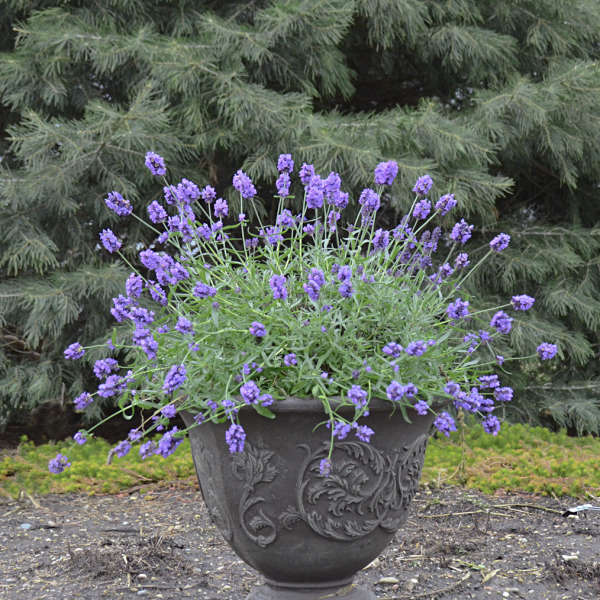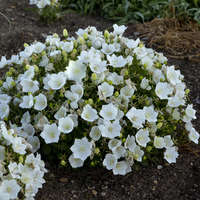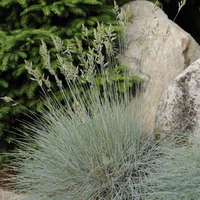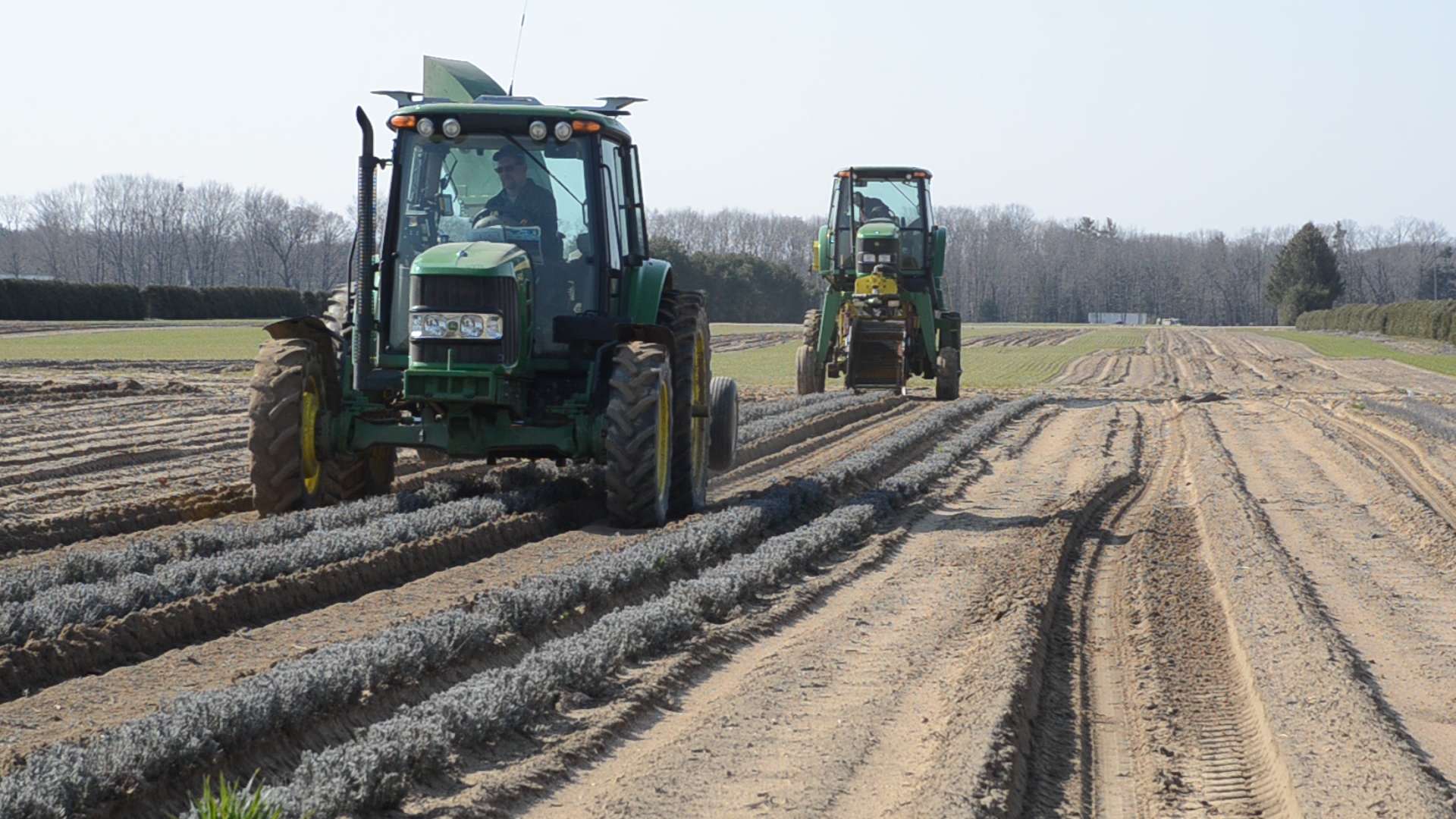Lavandula angustifolia 'French Perfume'
Common Name: English Lavender
This award winning Dutch selection of English Lavender blooms the first year from seed, making it quick to turn at retail.
The grey-green foliage forms a compact, uniform, rounded mound topped with deep purple flowers beginning in midsummer. The flowers are intensely fragrant, carrying an unusually sweet, clean lavender perfume scent. They are wonderful for making potpourri and lavender wands.
Lavender has been grown for centuries for its intensely fragrant flowers and beautiful appearance. It is a staple item of every sunny garden.




